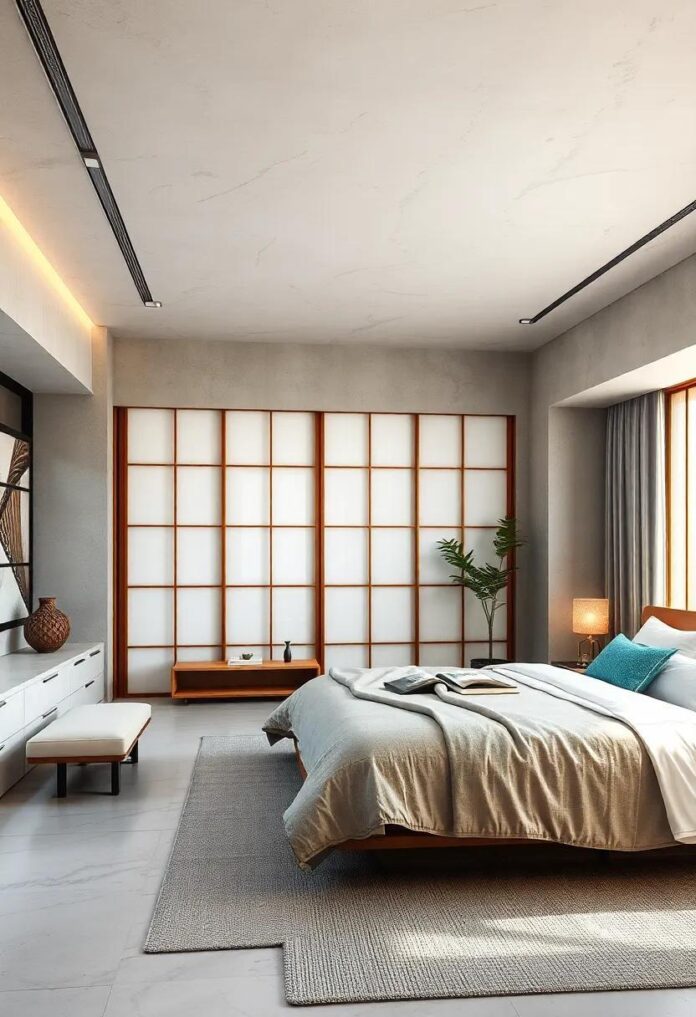In the hustle and bustle of modern life, finding a sanctuary within your home is essential for true relaxation.The serene aesthetic of a Japanese bedroom,especially when adorned with elegant shoji panels,offers a perfect escape from daily stress. In this listicle,we’ll explore 25 inspiring elements that can transform your bedroom into a tranquil space,inviting calm and harmony into your life. From the soothing palette of colors to the intentional placement of natural materials, each item highlighted here will guide you in curating a restful retreat that resonates with the principles of Japanese design. Expect to gain practical tips, innovative ideas, and a deeper understanding of how to create an environment that promotes peace and mindfulness. Whether your looking to refresh your existing decor or embark on a complete renovation, these 25 elements will inspire you to cultivate a bedroom that is not just a room, but an oasis of tranquility.
Embrace Natural Light: Use shoji panels to diffuse sunlight and create a soft,inviting glow throughout the room
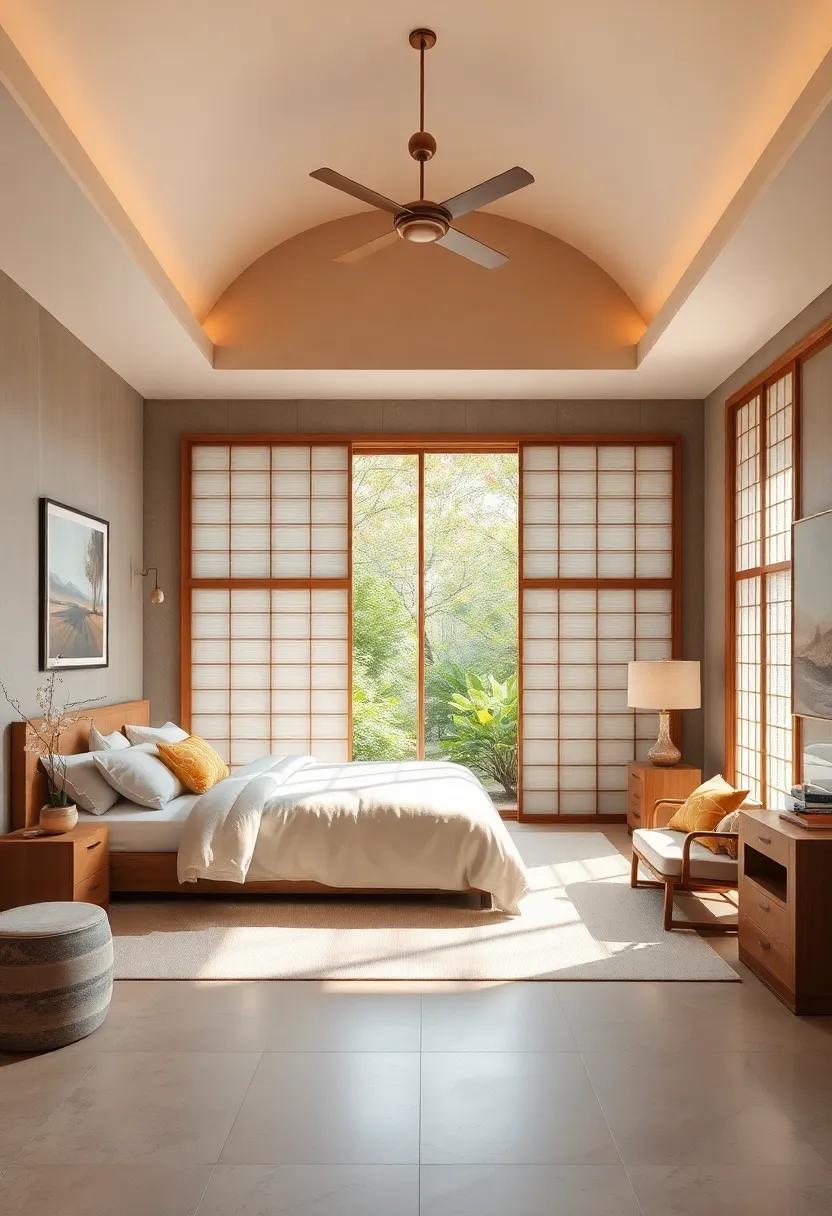
Incorporating shoji panels into your bedroom design is not just a stylistic choice but a transformative experience for how natural light interacts with your space. These conventional Japanese screens are designed to filter sunlight, allowing a gentle diffusion that softens harsh rays while creating an ethereal glow in your room. As sunlight filters through the rice paper, your bedroom takes on a tranquil ambiance, reminiscent of serene Japanese gardens.This light manipulation can significantly affect your mood, fostering a peaceful oasis for relaxation.
Besides their aesthetic appeal, shoji panels can be versatile in functionality. Consider the following ideas to maximize their use:
- Room Divider: Use shoji to separate your sleeping area from a small home office, providing both privacy and a cohesive flow of light.
- Window Treatment: Replace heavy drapes with shoji panels for a seamless transition between indoor and outdoor, inviting nature into your sanctuary.
- Artistic focal Point: Choose panels with intricate designs or motifs to enhance your bedroom’s elegance, adding a subtle artistic touch that reflects your personality.
| benefits of shoji Panels | Features to Consider |
|---|---|
| Softens natural light | Material (rice paper or wood) |
| Enhances privacy | size and customization options |
| Creates a calming atmosphere | Design style (traditional vs. modern) |
Incorporate Minimalist Design: Keep furnishings to a minimum to cultivate a sense of space and tranquility
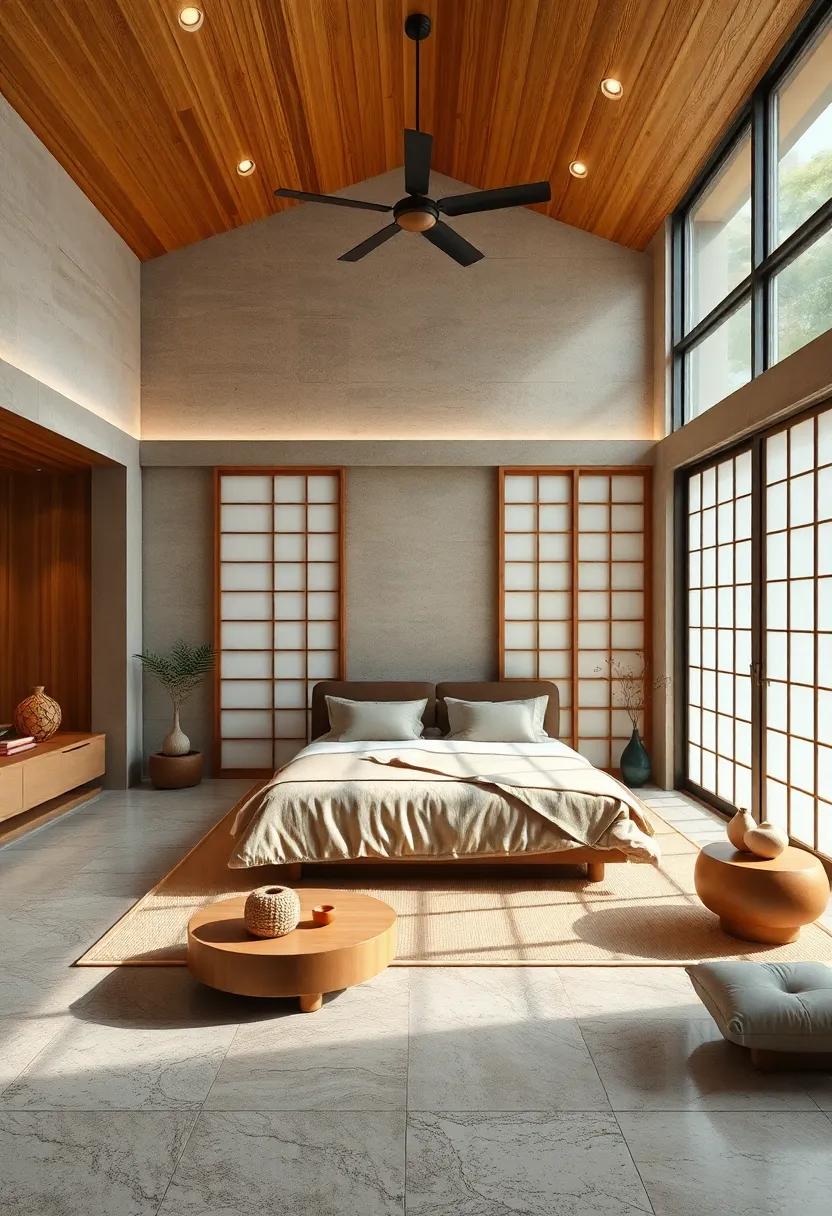
To create a serene and peaceful atmosphere in your Japanese bedroom, prioritize a minimalist aesthetic that promotes open space and tranquility. Start by selecting essential furnishings that fulfill functional needs while avoiding clutter. Consider a low-profile bed, such as a futon or platform style, which allows the floor to remain visible and enhances the sense of space. Integrate simple storage solutions, like under-bed drawers or sleek cabinets, that blend seamlessly with the environment.Each piece of furniture should have a clear purpose, ensuring that your bedroom remains a sanctuary for rest and relaxation.
When choosing decorative elements, opt for natural materials and neutral colors that evoke calmness. Focus on accessories that serve both beauty and function, such as a beautifully crafted tatami mat or a low bench for seating. Incorporating a single statement piece—like a minimalist art print or a potted bonsai—can heighten the tranquil aesthetic without overwhelming the space. Remember, in a minimalist design, less is truly more; each item in the room should contribute to an overall atmosphere of peace and serenity, allowing for a gentle retreat from the everyday hustle.
Use Earthy Materials: Choose wooden elements and stone accents to connect with nature and promote serenity
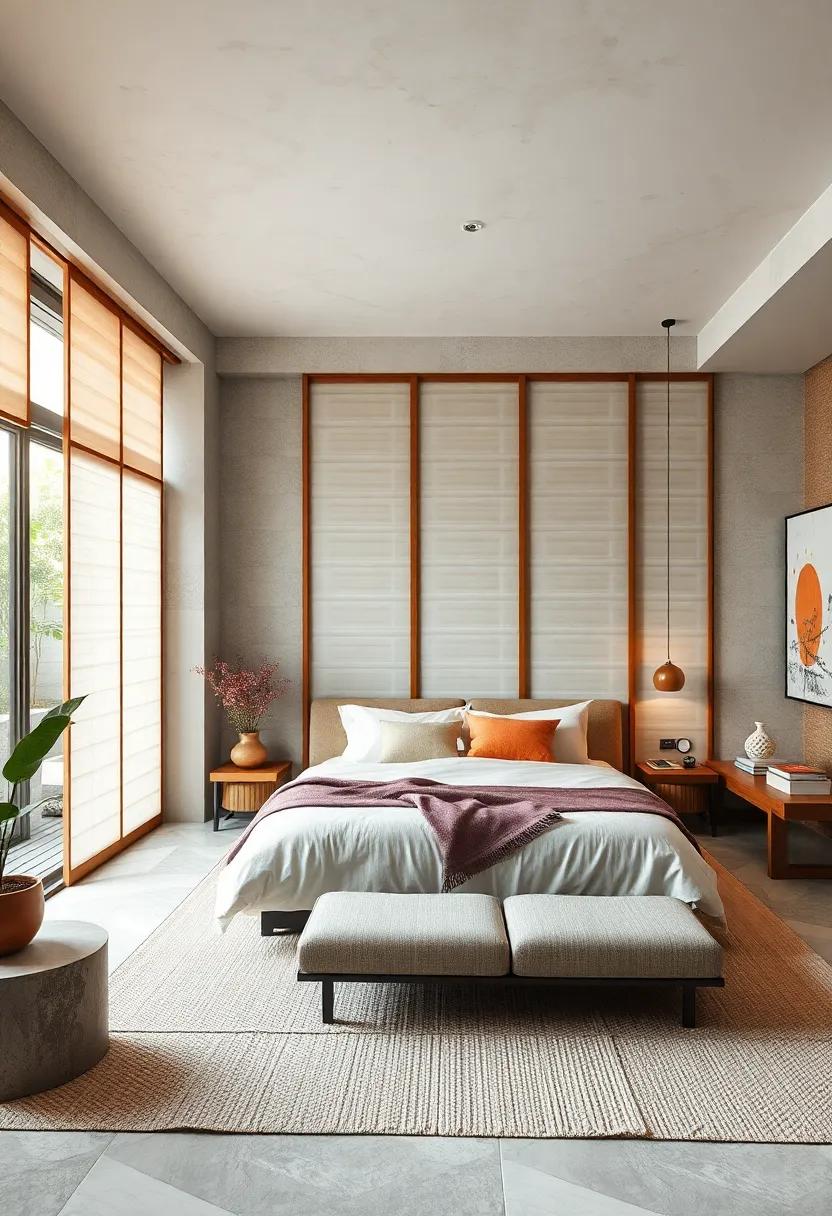
Incorporating natural elements into your bedroom is essential for creating a serene atmosphere reminiscent of a tranquil Japanese retreat. Wooden elements serve as a foundational aspect of this aesthetic,infusing warmth and a sense of authenticity into the space. Consider using light-colored woods, such as bamboo or maple, for your furniture to enhance the open, airy feel. Beyond furniture, wooden accents like carved wall paneling, picture frames, or bedside tables can add depth and character, inviting peace and calm. Pair these features with stone accents—think polished river stones or slate coasters—to ground the decor and embody a connection to nature. These elements can be strategically placed to complement the smooth lines of your shoji panels, creating a harmonious blend of textures that evoke the natural landscapes of Japan.
For added versatility,consider layering different earthy textures throughout the room. Use woven baskets made from natural fibers to store blankets or accessories,presenting an organic touch while enhancing functionality.Incorporate a small indoor garden featuring bonsai trees or succulents that echo the simple beauty of Japanese nature. displaying these plants in stone pots will harmonize your theme and draw the eye, suggesting tranquility and balance. Moreover, think about using ceramic or clay decor pieces that reflect the earthy palette, which can serve as perfect conversation starters while maintaining the serene ambiance. By thoughtfully selecting these materials, your bedroom will transform into a restful sanctuary that nurtures connection with the earth and promotes inner peace.
Add Live Plants: Incorporate greenery to enhance air quality and offer a calming connection to the outdoors
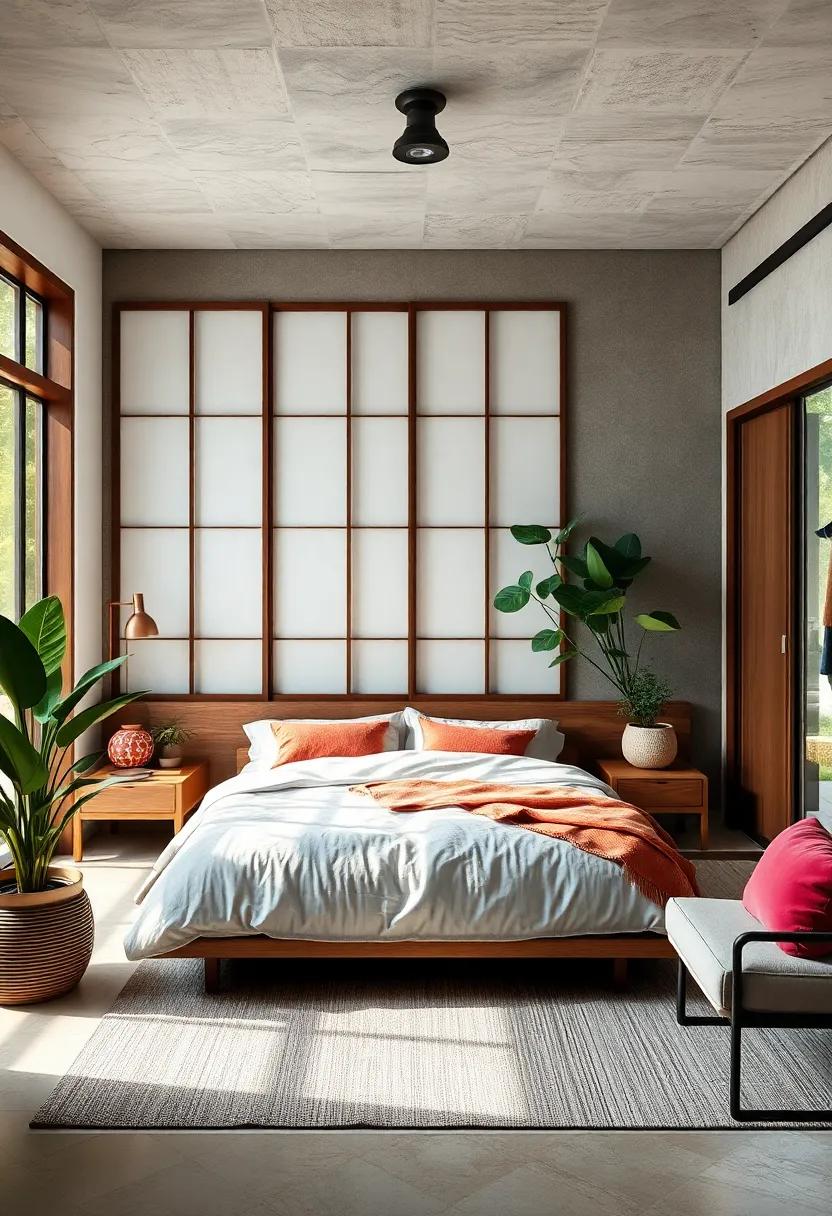
Integrating live plants into your Japanese-inspired bedroom can create a soothing atmosphere while promoting cleaner air quality.Bamboo,known for its calming presence,is not only visually appealing but also serves as a natural air purifier. snake plants and peace lilies are excellent choices for low-light environments, providing a touch of greenery that thrives near shoji panels. Consider placing a small bonsai tree on your bedside table for a touch of artistry and tradition, or hang ferns in macramé planters to softly cascade down, enhancing the serene vibe of your space.
To elevate your plant game, think about creating a dedicated greenery corner in your room.Use a simple shelving unit to display a selection of varied-sized pots, incorporating plants like Japanese peace lilies, succulents, and air plants for a charming mix. Combine textures and heights to keep the arrangement dynamic while staying true to the minimalist ethos of japanese design.Here’s a fast reference table to help you choose the perfect plants:
| plant | Air Quality Benefits | Care Level |
|---|---|---|
| Bamboo | Removes formaldehyde | Easy |
| Snake Plant | Produces oxygen at night | Low maintainance |
| peace Lily | Filters toxins | Moderate |
| Bonsai | Calming presence | Moderate to high |
| Ferns | increases humidity | Moderate |
Choose Soft Color Palettes: Utilize neutral tones like beige, cream, and soft greens to maintain a peaceful atmosphere
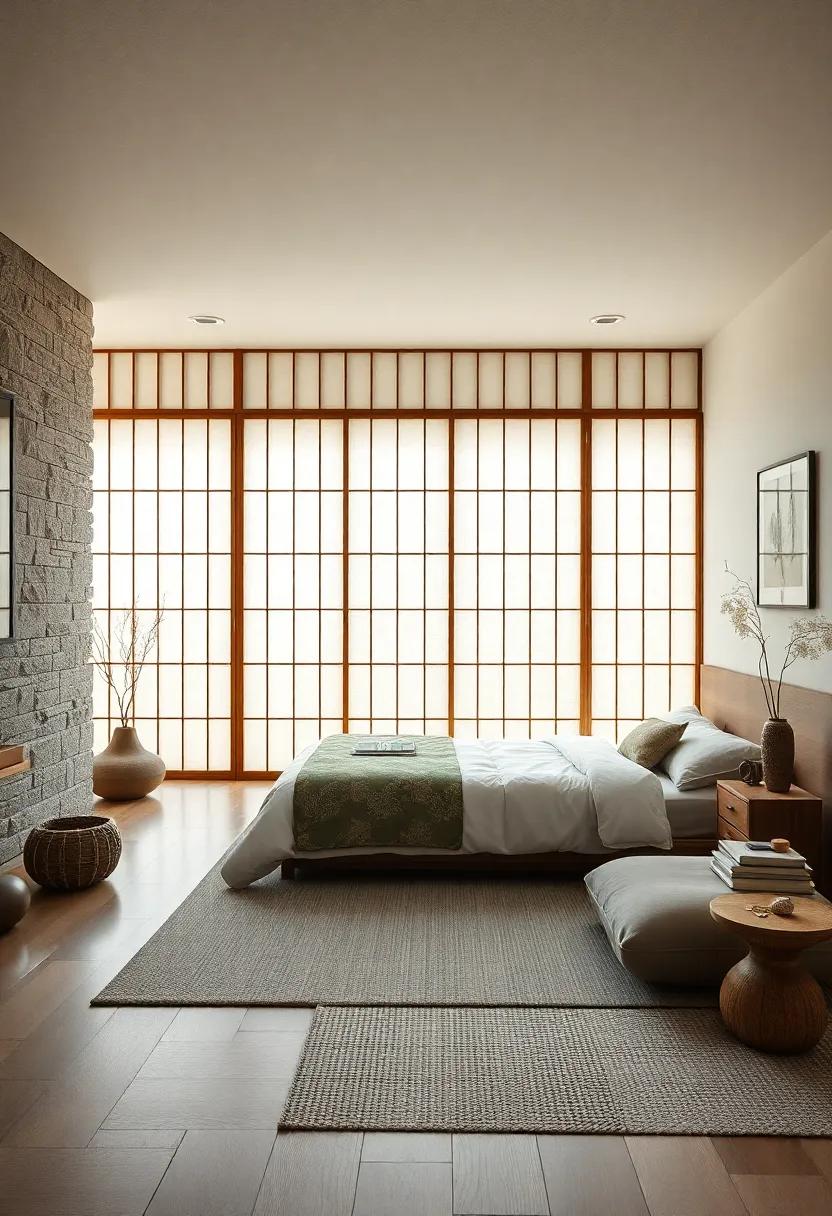
To cultivate a serene environment in your Japanese bedroom, choosing the right color palette is essential. Soft hues such as beige, cream, and soft greens can effectively evoke tranquility and comfort. These subtle colors not only make the space feel airy and spacious but also serve as an ideal backdrop for the natural materials typically found in Japanese design. By utilizing these neutral tones, you can create a harmonious flow throughout the room that promotes relaxation and mindfulness.
Incorporating these shades allows you to blend gently with the rich textures of traditional elements. Consider pairing your wall color with:
BEST-SELLING PRODUCTS IN THIS CATEGORY
- [Supreme Comfort and Softness] Treat yourself to the luxurious comfort of the OLANLY Machine Washable Area Rug. Its plush, high-density pile provides an incredibly soft, plush feel underfoot. Enjoy the warmth and coziness, all while the rug remains fiber-shed-free, making it ideal for your bedroom, living room, or nursery.
- Unique Reversible Design: This floral comforter set is reversible with delicate plant patterns, making it a fantastic choice for Christmas gift ideas. Simply flip the comforter or pillow shams to refresh your decor. The vibrant patterns bring a touch of elegance and a natural feel to your bedroom.
- 【Bedside Shelf Organizer】This space saving shelf organizer is suitable for holding mobile phones,remotes,glasses,books,clip lights,tissues,scissors,lipstick,hair accessories,data cables,headphones,mail envelopes, keys, tools,jewelry,manicure kit,and other little things. Helping you keep your house neater than tossing them on a tabletop.
- Wooden accents – Light wood furniture adds warmth without overwhelming the senses.
- Natural fabrics – Linen or cotton bedding in cream or soft green complements the peaceful aesthetic.
- Minimalist decor - Simple vases or art pieces in muted tones maintain focus on serenity rather than clutter.
This calming palette not only enhances the visual appeal but also aids in creating a space that invites rest and reflection.
Create a Low-to-the-ground Layout: Opt for lower furniture to foster a more harmonious and grounded feel in the space
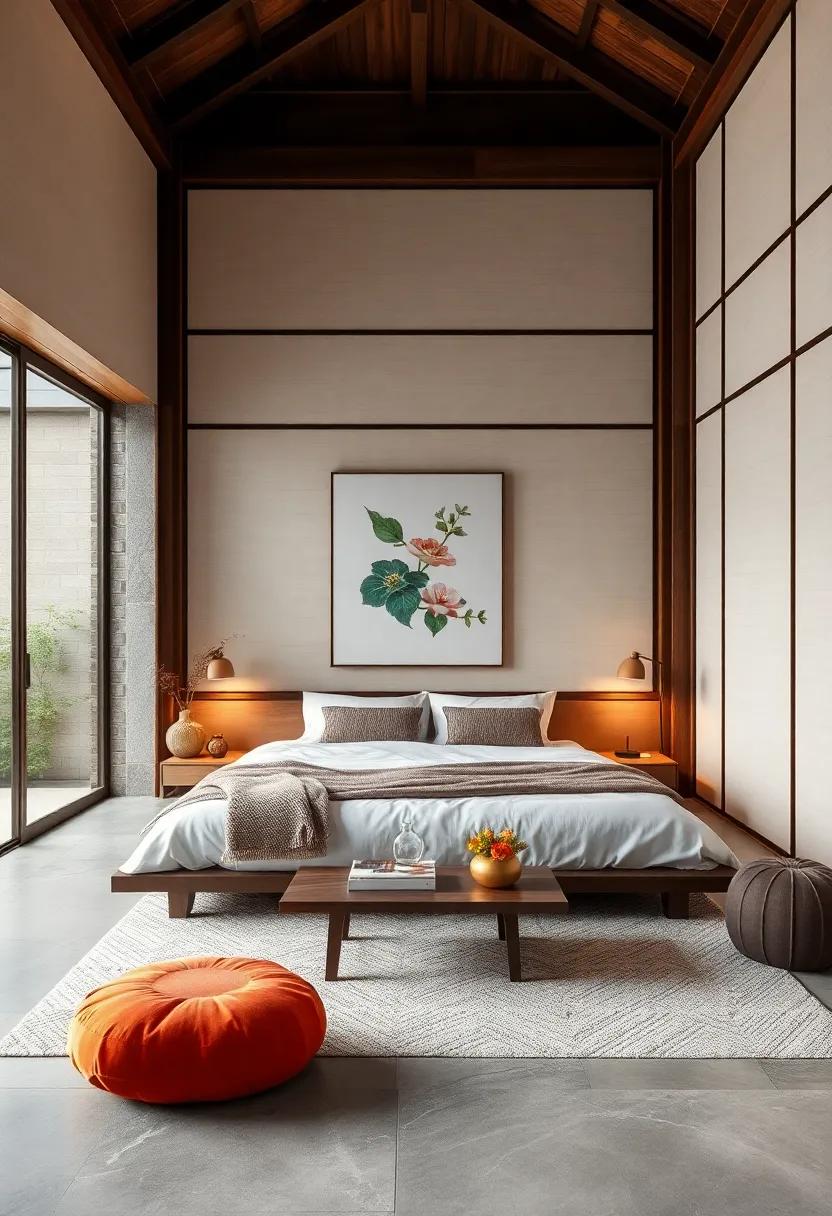
incorporating low-profile furniture into your bedroom design not only enhances the room’s overall aesthetic but also fosters a sense of tranquility. Low beds with simple lines create a spacious feel while offering comfort that is reminiscent of traditional Japanese homes. When selecting your furniture, consider items such as:
- Tatami Mats - These natural straw mats provide a soft, grounded surface.
- Low Coffee Tables – Perfect for minimalistic decor, they encourage relaxation.
- Floor Cushions – Encourage a casual and inviting atmosphere.
- Platform Beds – Designed to sit close to the ground, they promote a soothing vibe.
Arranging these elements thoughtfully can create a harmonious environment that embodies the essence of Zen. Choose a color palette that emphasizes earthy tones and soft textures to elevate the feel of your space. For an added touch of simplicity, consider integrating:
| Furniture Type | Key Feature |
|---|---|
| Low Chaise Lounges | Encourages relaxation and conversation. |
| Wooden Benches | Sturdy, natural aesthetic that enhances minimalism. |
| Short Dressers | Provide storage without overwhelming the space. |
| Japanese-style Stools | Versatile seating option for small areas. |
Integrate Tatami Mats: Use traditional tatami mats as flooring for a comforting and authentic Japanese aesthetic
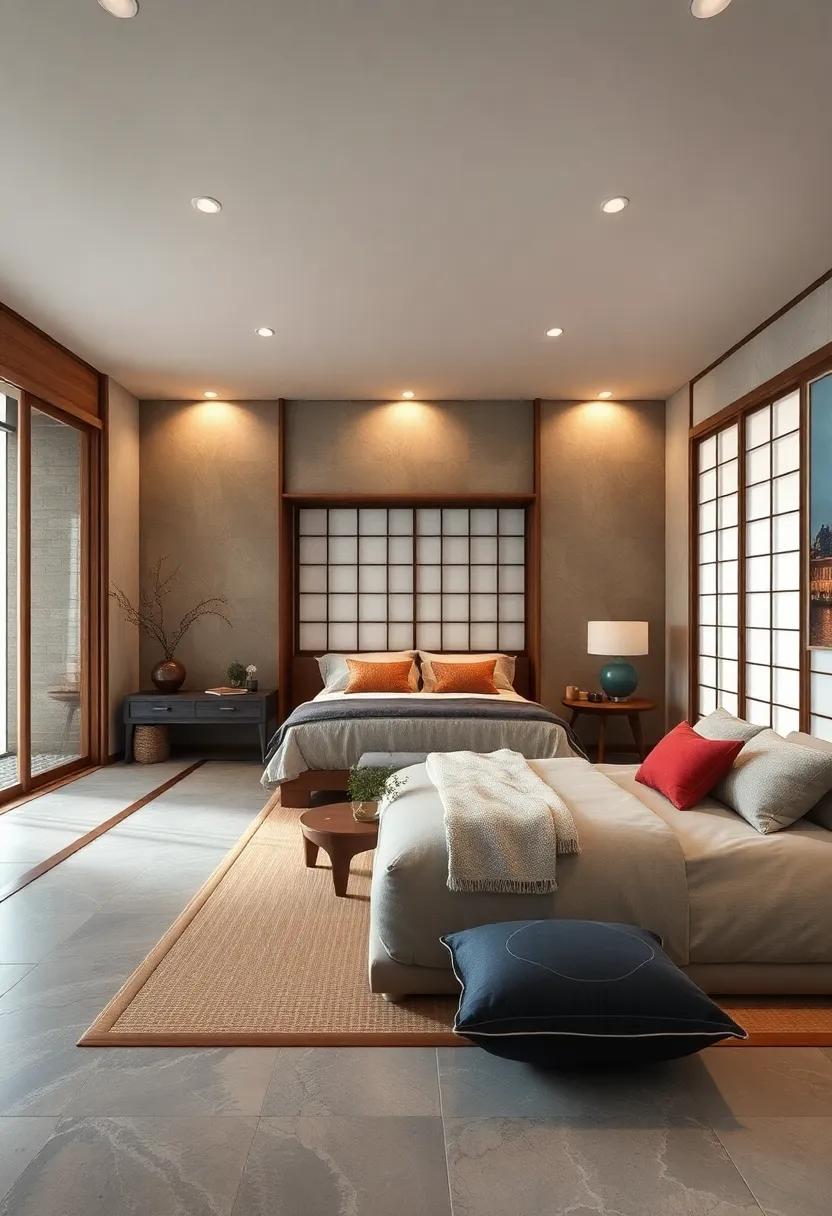
Incorporating traditional tatami mats into your bedroom not only enhances the aesthetic but also promotes a sense of tranquility and comfort. These mats, made from rice straw and covered with woven rush grass, bring an organic feel to the space, grounding it in nature.the gentle earthy tones and textures of tatami create a perfect backdrop for minimalist décor, allowing other elements—such as wooden furniture and soft fabrics—to shine. To fully embrace the Japanese style, consider layering tatami mats over a wooden floor, creating a cozy multi-textured environment that invites both relaxation and mindfulness.
Additionally, the smell of tatami can evoke a calming atmosphere reminiscent of serene Japanese gardens. Their natural fibers help regulate humidity and improve air quality, making your bedroom not only more aesthetically pleasing but also healthier. To complement your tatami flooring, you can add elements like low-profile furniture and soft bedding in harmonious colors. Decorative touches, such as ceramic vases and paper lanterns, further echo the simplicity and elegance of traditional Japanese design, crafting a serene sanctuary perfect for unwinding after a long day.
Select Elegant Textiles: Choose soft, natural fabrics for cushions, bedding, and curtains to enhance comfort and relaxation
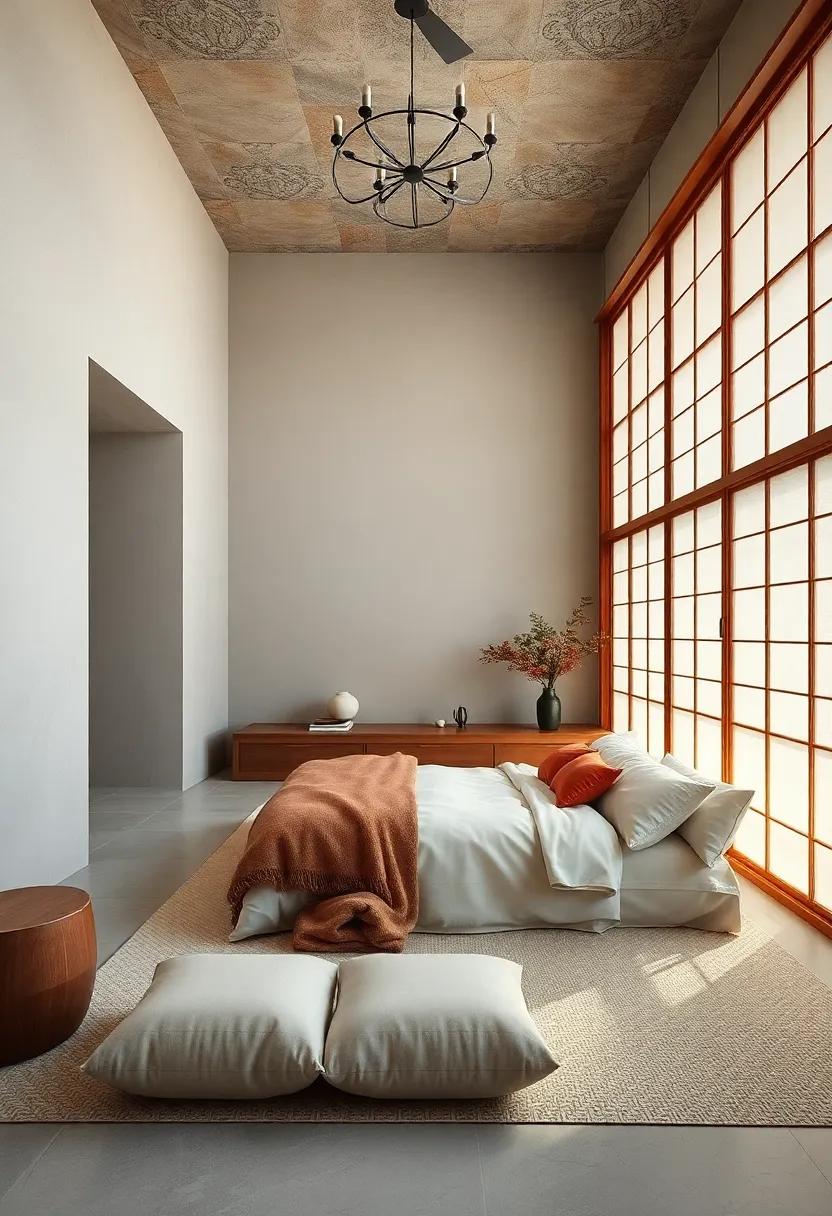
In the serene atmosphere of a japanese-inspired bedroom, the choice of textiles can significantly enhance the peaceful ambiance. Opt for soft, natural fabrics that invite calm and comfort, providing a tactile experience that echoes the simplicity found in nature. Consider materials such as cotton, linen, or wool for your cushions, bedding, and curtains. These fabrics not only improve the visual elegance of your space but also offer a luxurious feel that encourages relaxation after a long day. Layering different textures can add depth to the space while maintaining a cohesive, soothing aesthetic.
Selecting the right colors for your textiles further contributes to the tranquil environment. Think about muted tones and earthy hues like soft greens, warm beiges, and gentle blues that reflect the natural world, promoting a sense of harmony. To achieve this effect elegantly, you can incorporate the following elements:
- Cushions: Use a variety of sizes in light fabrics for a cozy reading nook.
- Bedding: Choose light-weight, breathable sheets in pastel or neutral shades.
- Curtains: Opt for sheer fabrics to allow gentle light to filter into the room.
- Throw blankets: Add a touch of warmth with a knitted or woven throw in natural fibers.
Combining these elements creates a layered look that is both inviting and serene. For a more meticulous design, consider the following table showcasing a few ideal fabric options:
| Fabric Type | Characteristics | Suggested Use |
|---|---|---|
| Cotton | Soft, breathable, easy to maintain | Bedding and curtains |
| Linen | Textured, cooling, natural sheen | Cushions and curtains |
| Wool | Warm, durable, and insulating | Throw blankets and cushions |
| Bamboo | Moisture-wicking, soft, eco-friendly | All textile uses |
Incorporate a Zen Garden: Design a small indoor Zen garden for a grounding and peaceful focal point
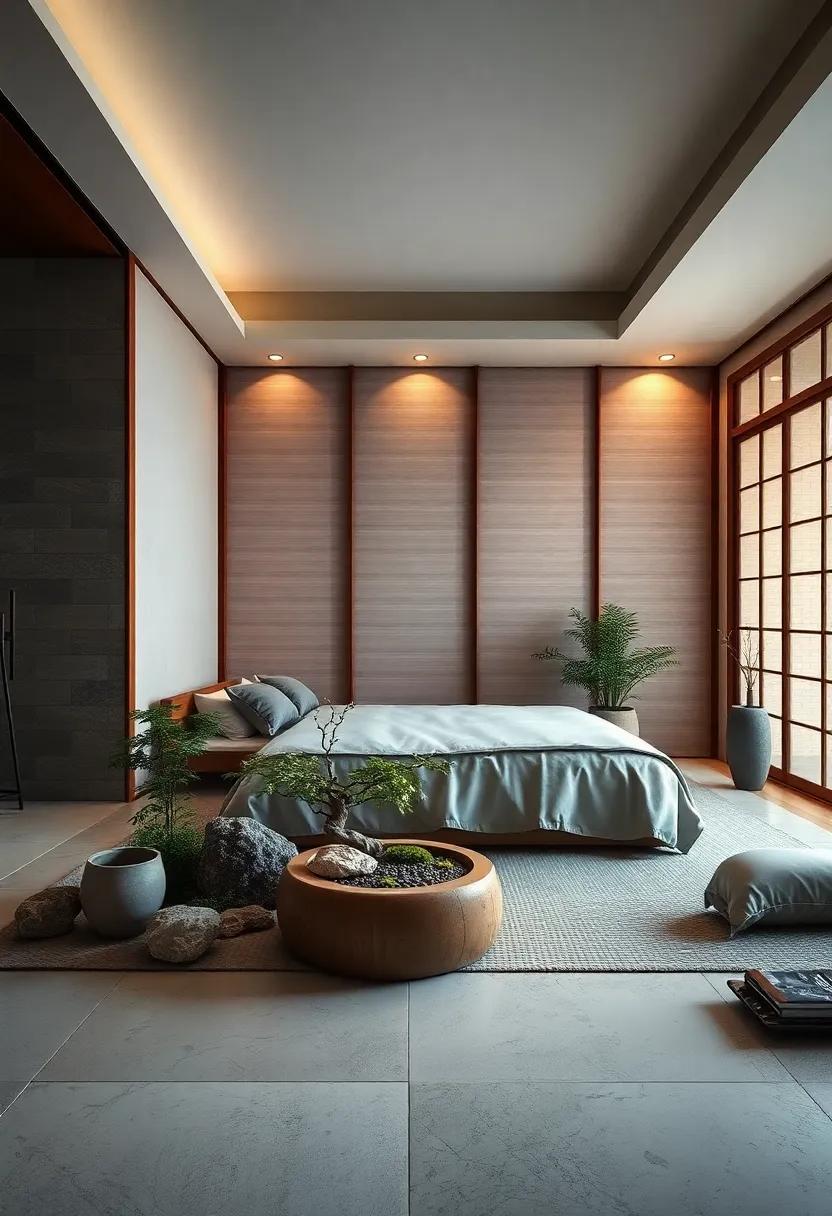
Creating a serene indoor Zen garden can transform your Japanese bedroom into a sanctuary of calmness. Begin by selecting a small, shallow container that can fit easily on a side table or dresser. Fill it with fine gravel or sand, which you can rake into calming patterns, symbolizing the wave-like motion of water. To enhance the peaceful ambiance,incorporate a few natural elements like smooth stones or small pebbles. These represent stability and strength, grounding the space while adding texture. Consider using miniature plants such as moss or succulents that require minimal care; their green hues bring life and freshness indoors.
To elevate the experience, include a focal point like a single bamboo stalk or a small Zen figurine. The simplicity of these elements invites meditation and mindfulness. Set your Zen garden in an area where you can engage with it daily, perhaps near a window where natural light can filter through.To enhance the atmosphere,think about adding a small water feature like a tabletop fountain,creating gentle sounds that mimic nature. By nurturing a small oasis, you foster a dedicated space for reflection, allowing tranquility to flow throughout your bedroom.
Utilize Shoji Panels as Room Dividers: Create intimate spaces within a larger room, offering privacy while maintaining an open feel
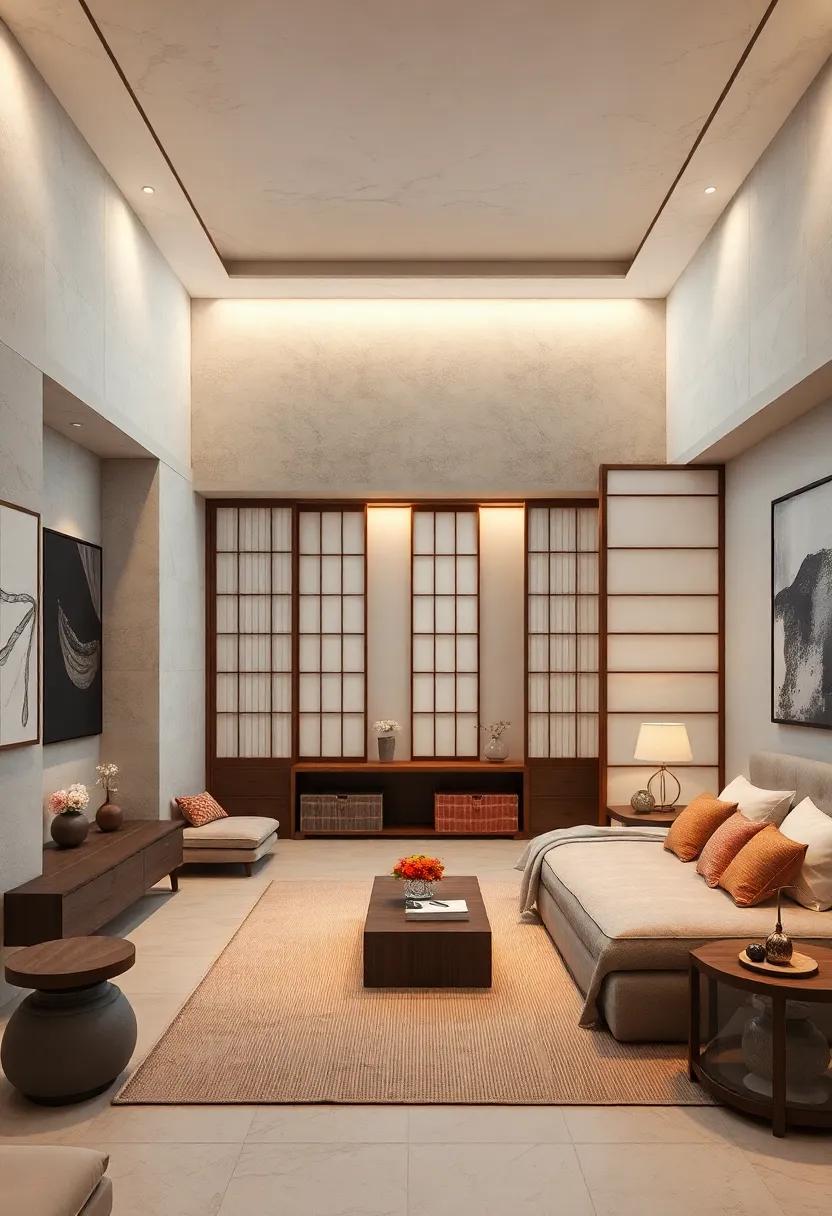
Incorporating Shoji panels into your living space can transform the dynamics of a room, allowing for both functionality and aesthetics. These elegant, sliding wood-and-paper screens create partitioned areas that can be customized to suit your needs while preserving a sense of openness. Whether you want to carve out a cozy reading nook, an intimate meditation corner, or a small workspace, these panels provide a perfect combination of privacy and light. The translucent nature of Shoji allows natural light to filter through while maintaining an airy ambiance, ensuring that any space feels connected rather than isolated.
To maximize the potential of shoji panels as room dividers, consider the following tips:
- Placement: Position panels strategically to delineate spaces without obstructing flow.
- Layering: Combine Shoji with other lightweight materials for added texture and visual interest.
- Color Palette: opt for neutral or pastel shades to enhance the calming vibe of your Japanese-inspired bedroom.
- Functionality: Use them to hide clutter or designate specific areas for activities like yoga or tea ceremonies.
- Flexibility: Install track systems for easy movement,enabling you to adapt your space according to your needs.
Display Japanese Calligraphy: Enhance the ambiance with framed calligraphy art that promotes tranquility and mindfulness
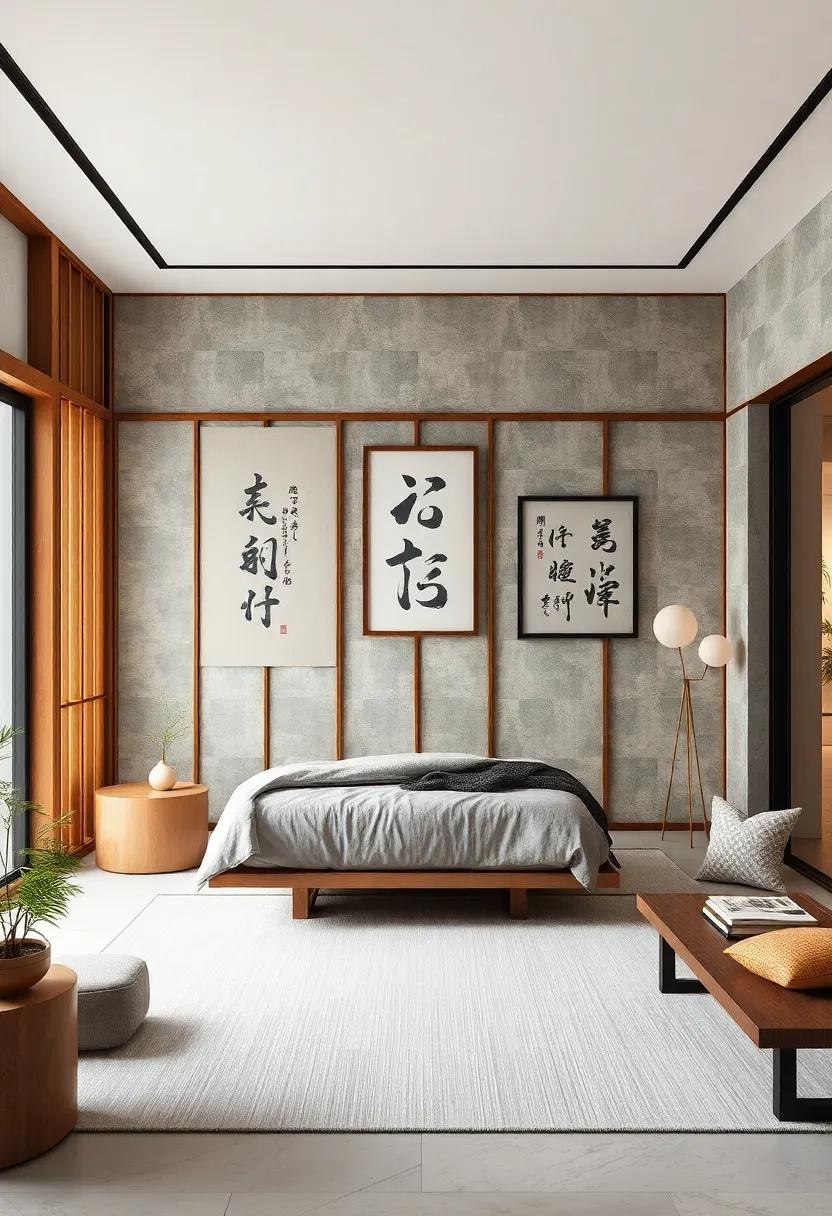
Incorporating framed calligraphy into your bedroom decor can transform the space into a calming sanctuary. Japanese calligraphy, known as shodō, beautifully expresses the art of writing and is deeply rooted in mindfulness traditions. Choose pieces that embody principles such as serenity, balance, and harmony, as these concepts resonate well with a tranquil environment. Position the calligraphy against a soft, neutral backdrop to let the intricate brush strokes and characters stand out, creating a peaceful focal point in the room. Consider using natural materials for frames,such as wood or bamboo,which complements the overall aesthetic of a Japanese-inspired bedroom.
To enhance the tranquil atmosphere, select calligraphy that features meaningful words or phrases related to peace, such as “tranquility” (平和, heiwa) or “mindfulness” (心の平穏, kokoro no heion).You can also create a small gallery wall dedicated to the art of calligraphy, mixing different styles and sizes for visual interest. an excellent way to juxtapose the rigidity of the text is to surround it with elements of nature, such as indoor plants or a calming water feature. The gentle contrast will encourage a meditative state, making the bedroom not just a place for rest but a true retreat for the mind.
| Word/Phrase | Meaning |
|---|---|
| 平和 (Heiwa) | Peace |
| 静けさ (Shizukesa) | Calmness |
| 心 (Kokoro) | Heart/Mind |
| 和 (Wa) | Harmony |
Soft Lighting Options: Incorporate paper lanterns or dimmable fixtures to adjust the mood according to the time of day
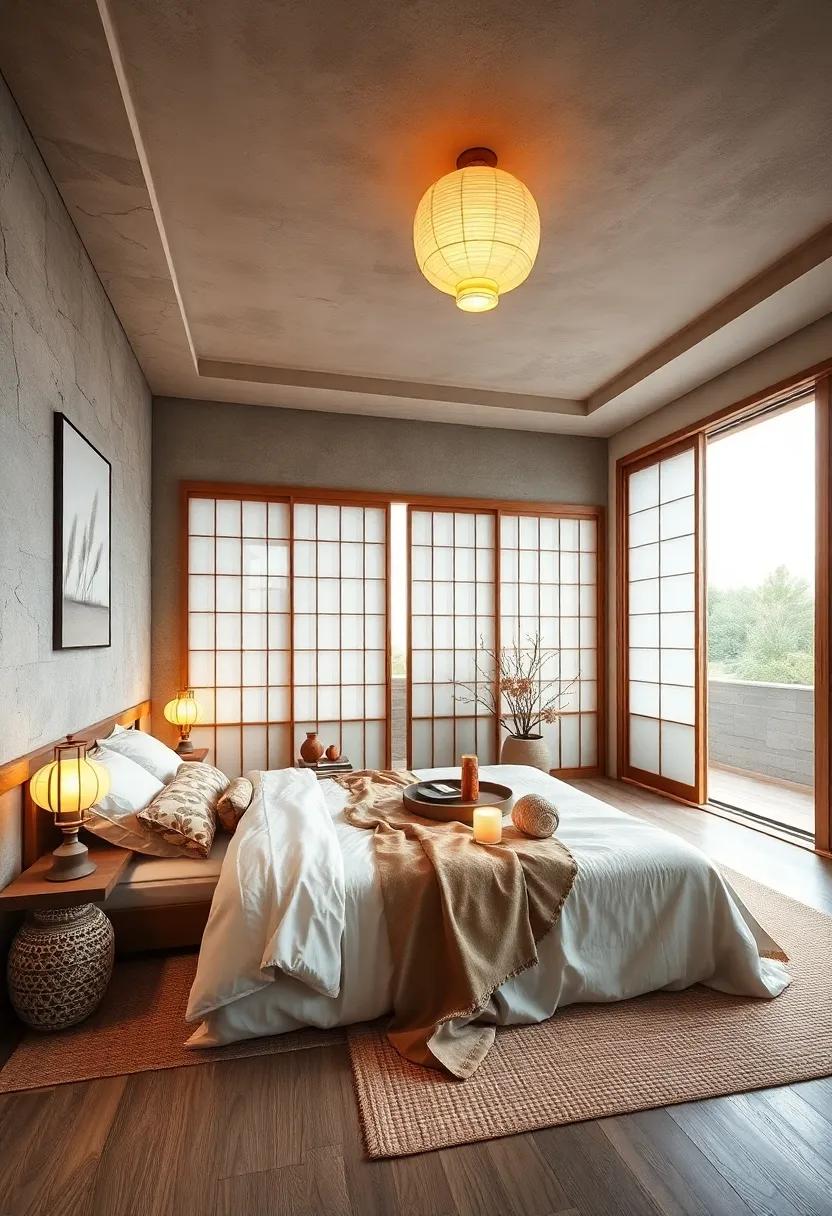
Transforming the ambiance of your Japanese bedroom can be effortlessly achieved by utilizing soft lighting options that evoke serenity and warmth. Paper lanterns serve as a stylish and traditional choice, offering a gentle glow that enhances the natural calm of the space. These lanterns can be placed strategically in corners or hung from the ceiling to provide a diffused light that mimics sunlight, creating a peaceful atmosphere regardless of the time of day. Choose lanterns in soft hues like white, cream, or pastel shades to maintain a minimalistic yet inviting aesthetic that is synonymous with Japanese design.
In addition to paper lanterns, dimmable fixtures are ideal for adjusting brightness levels to suit various moods and activities throughout the day. By incorporating dimmer switches for overhead lights or wall sconces, you can easily transition from a vibrant morning glow to a softer evening ambiance, perfect for relaxation. Pairing these fixtures with warm white bulbs can further accentuate the tranquil environment, while adjustable lighting options ensure that your space remains functional, whether you’re reading a book or meditating. Elevate your bedroom experience with lighting that offers flexibility and enhances the serene beauty of your Japanese-inspired retreat.
Include a Soothing Water Feature: Use a small water fountain to create the calming sound of trickling water, adding to the serene environment
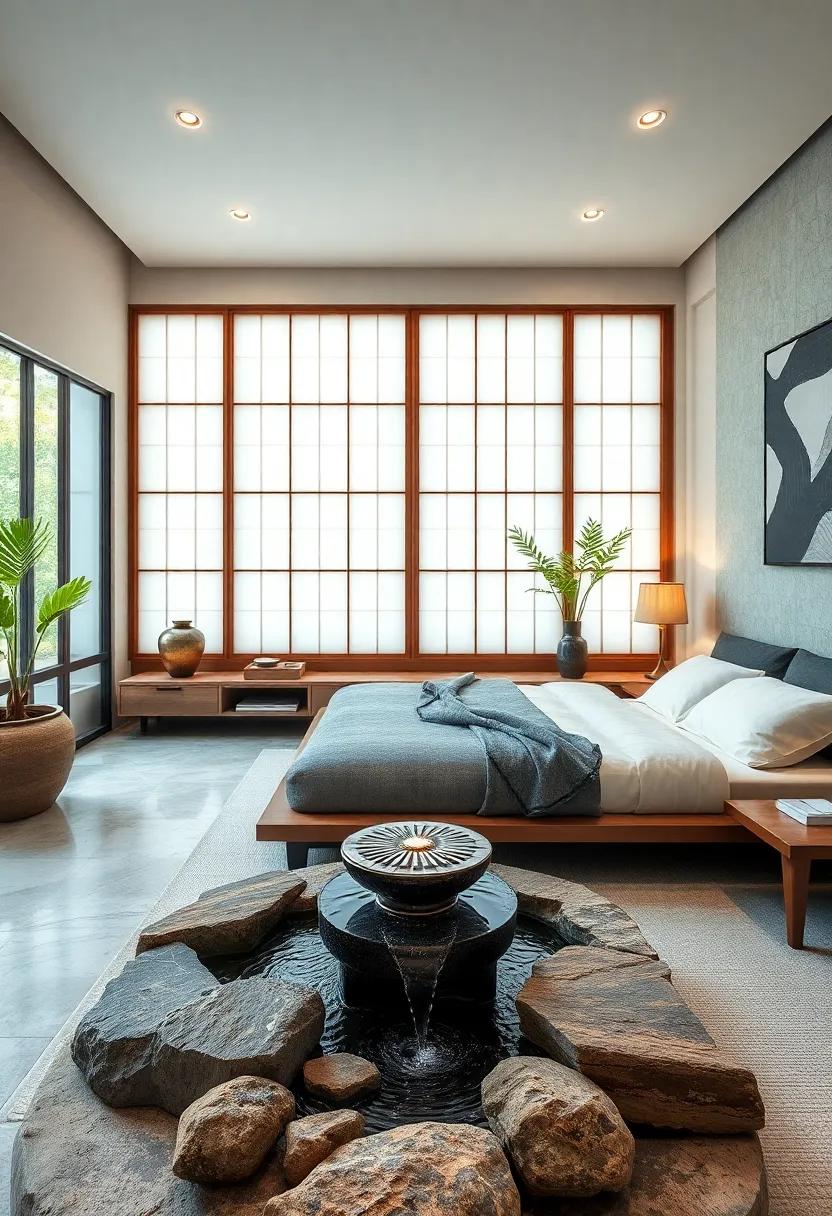
Integrating a small water fountain into your Japanese bedroom can transform the space into a serene retreat, where the soft sounds of trickling water effortlessly enhance your ambience. The gentle gurgle of flowing water serves not only as a soothing background melody but also helps drown out distracting noises from outside, creating a peaceful sanctuary.Whether you opt for a traditional stone fountain or a sleek modern design, the visual and auditory elements will evoke a sense of harmony and tranquility that is essential to Japanese aesthetics.
Consider the following ways to incorporate a water feature:
- Placement: Position the fountain near the entrance of the room or beside your shoji panels to create a welcoming atmosphere.
- Size: Choose a compact design that complements the proportions of your space without overwhelming it.
- Material: natural materials like stone or bamboo enhance the organic feel of the room, aligning with traditional Japanese design principles.
- Lighting: Incorporate soft lighting around the fountain to highlight the flowing water, especially during evening hours.
To maximize the beneficial effects, consider maintaining a small indoor garden around the water feature. This can create a lush, green setting that encourages relaxation while reflecting nature’s beauty. Here’s a simple table of plants that thrive in conjunction with a water fountain:
| Plant Type | Benefits |
|---|---|
| Ferns | Add humidity and lush greenery. |
| Bamboo | Symbolizes strength and resilience, enhancing your tranquil space. |
| pothos | Easy to care for and purifies the air. |
Incorporating both the fountain and surrounding greenery can create a cohesive and calming environment that invites mindfulness and relaxation, embodying the spirit of a serene Japanese bedroom.
Design a Reading Nook: Create a cozy corner with a comfortable chair and soft lighting for quiet reflection and reading
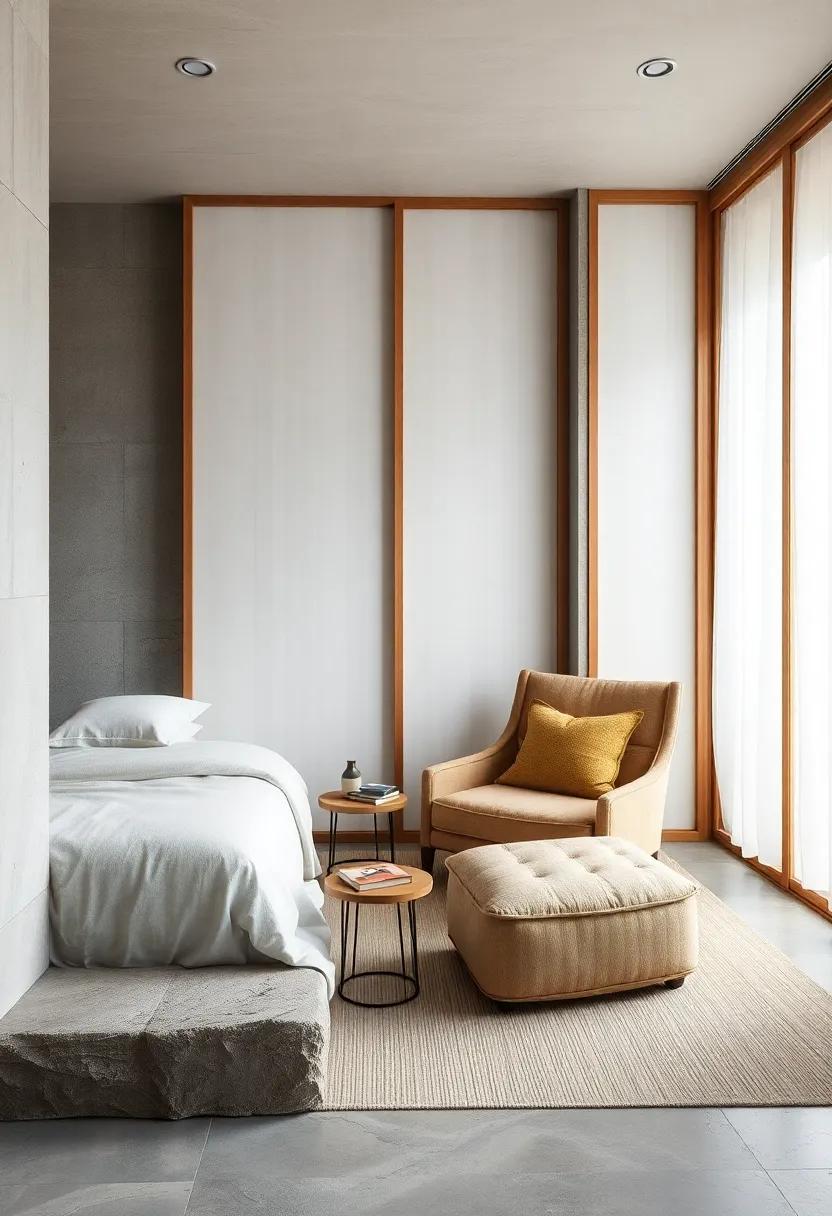
To cultivate a serene reading nook, start with a comfortable chair that invites you to sink in and escape into your favorite stories. Consider materials like soft fabric or bamboo that resonate with the Japanese aesthetic; look for designs that are low to the ground to maintain harmony within the space. Enhance this cozy corner with plush cushions and a handwoven throw that adds warmth and texture, making it the perfect spot for curling up with a good book.
The lighting in your reading nook can significantly influence its ambiance. Opt for soft, warm-toned lamps or Japanese paper lanterns to create a soothing glow that invites relaxation and contemplation. Position your light source to avoid glare on the pages while also illuminating your surroundings just enough to create a tranquil atmosphere.Adding a small table for your cup of tea or a stack of books will personalize this space, making it an intimate retreat for quiet reflection and literary journeys.
Emphasize Functional Decor: Choose decorative items that serve a purpose, aligning beauty with functionality
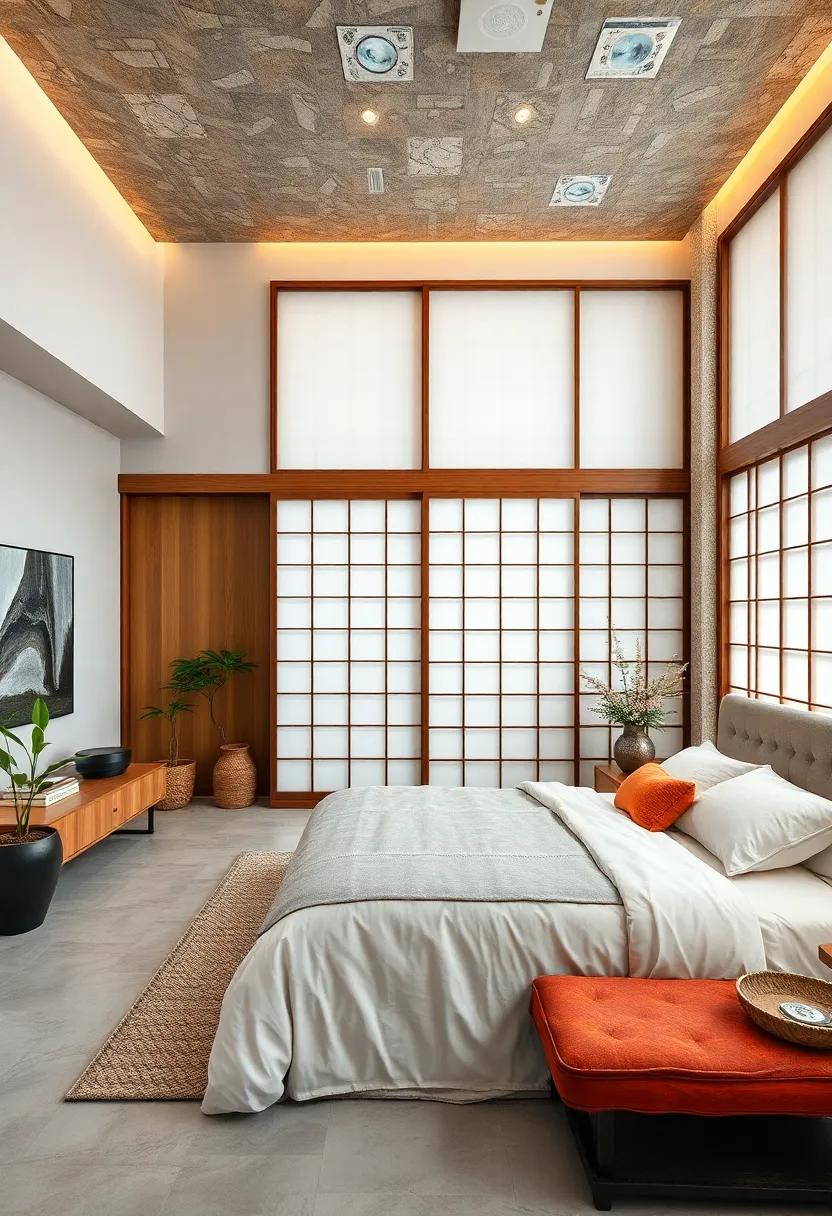
In a Japanese bedroom,the harmony of form and function is paramount. When selecting decorative items, consider those that accentuate the beauty of the space while also serving a practical purpose. For instance, tatami mats not only provide a natural aesthetic but also create a comfortable flooring option for meditation and relaxation. Likewise, handcrafted storage boxes not only organize essentials but add a charming touch to the decor.Look for pieces that embody the beliefs of ”less is more,” ensuring that each item contributes to the overall tranquility of the room.
Incorporate lighting fixtures that blend seamlessly with the surroundings and offer adjustable brightness for different activities, such as reading or unwinding. Wall-mounted shelves can showcase decorative items, like traditional Japanese ceramics, while keeping floor space clear and open. Opt for natural wood finishes that echo the earthy tones typically found in Japanese design—these elements resonate with a serene ambiance while also utilizing vertical space efficiently. By choosing items that merge usefulness with aesthetic appeal, you foster an environment of calm and balance that is essential for a tranquil oasis.
Use Sliding Doors: Integrate shoji-inspired sliding doors to save space and enhance the traditional Japanese aesthetic
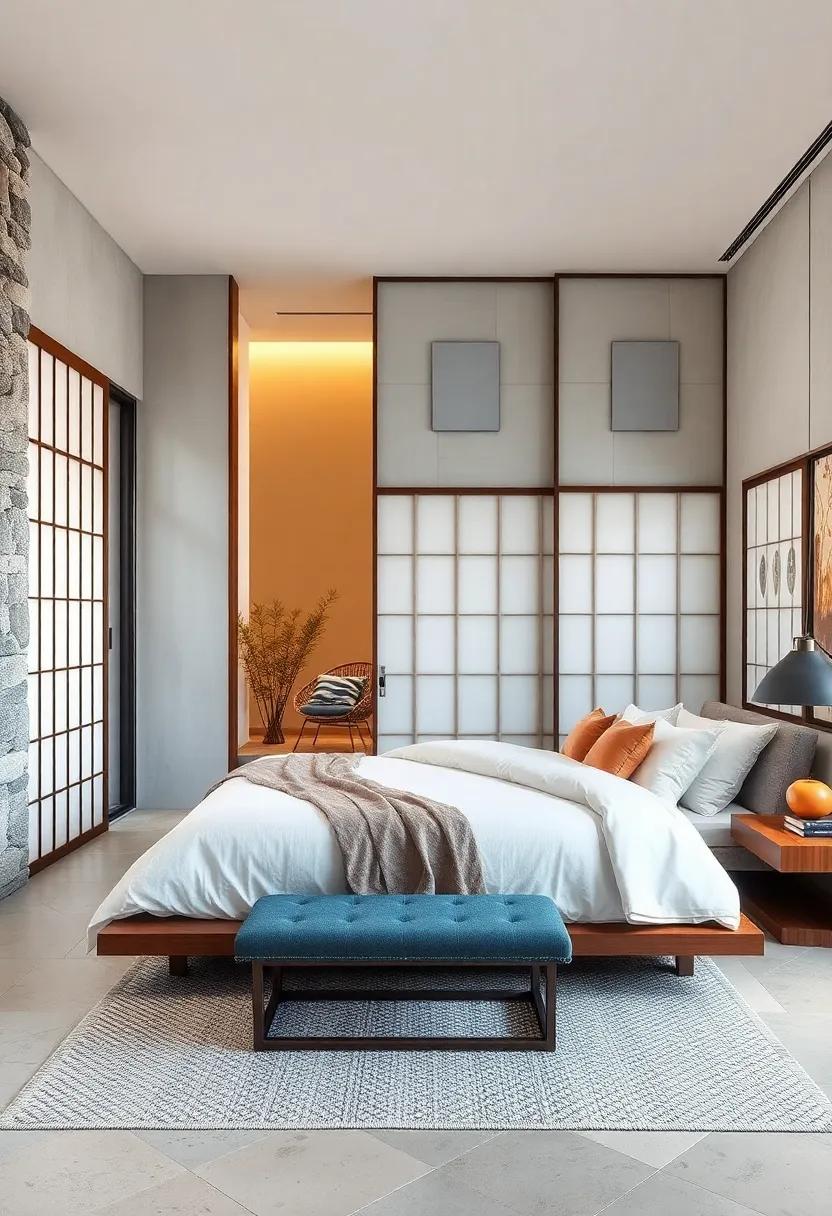
Sliding doors not only save precious space in small bedrooms but also seamlessly infuse a serene,traditional vibe reminiscent of Japanese living. By using *shoji-inspired* sliding doors, you can create divisions between rooms or areas without sacrificing openness. These doors, typically constructed with lightweight frames and translucent rice paper, allow natural light to filter through, enhancing the overall ambiance while maintaining privacy.
Integrating such doors can lead to a harmonious design that reflects simplicity and elegance. Consider these design ideas:
- Lightweight Materials: Opt for doors made from bamboo or thin wood to maintain an airy feel.
- Custom Designs: Personalize your doors with intricate patterns or paintings that echo Japanese art.
- Functional Alchemy: Use the sliding feature to transform your bedroom layout effortlessly when needed.
To enhance the experience further, you can create a cozy nook by placing a small table or seating area adjacent to the doors, reinforcing the tranquil atmosphere. this versatile approach not only showcases the beauty of traditional craftsmanship but also champions minimalist functionality.
Aromatherapy elements: Include essential oil diffusers or incense holders to promote relaxation through scent

To enhance the soothing ambiance of your tranquil Japanese bedroom, consider incorporating essential oil diffusers and incense holders. These aromatic tools are not only functional but also serve as lovely decor elements that harmonize with the aesthetic of shoji panels. Essential oil diffusers disperse pure plant essences into the air, creating a serene environment that helps alleviate stress and promote better sleep. Look for minimalist designs that blend seamlessly with your interior, such as ceramic or bamboo diffusers that invite natural beauty into the space.
Similarly, incense holders add a touch of elegance while filling the air with calming scents. Choose holders made from natural materials like wood or stone that reflect the simplicity and grace of Japanese design. Pairing your incense with calming fragrances such as sandalwood, lavender, or ylang-ylang can transform your bedroom into a sanctuary. For added inspiration, explore the following options:
| Type | Benefits |
|---|---|
| Essential Oil Diffuser | Reduces stress, improves sleep |
| Incense holder | Enhances meditation, calms the mind |
| Natural Candles | Creates a warm glow, promotes tranquility |
Create an Altar Space: Dedicate a small area for personal or spiritual items, allowing for moments of reflection and peace
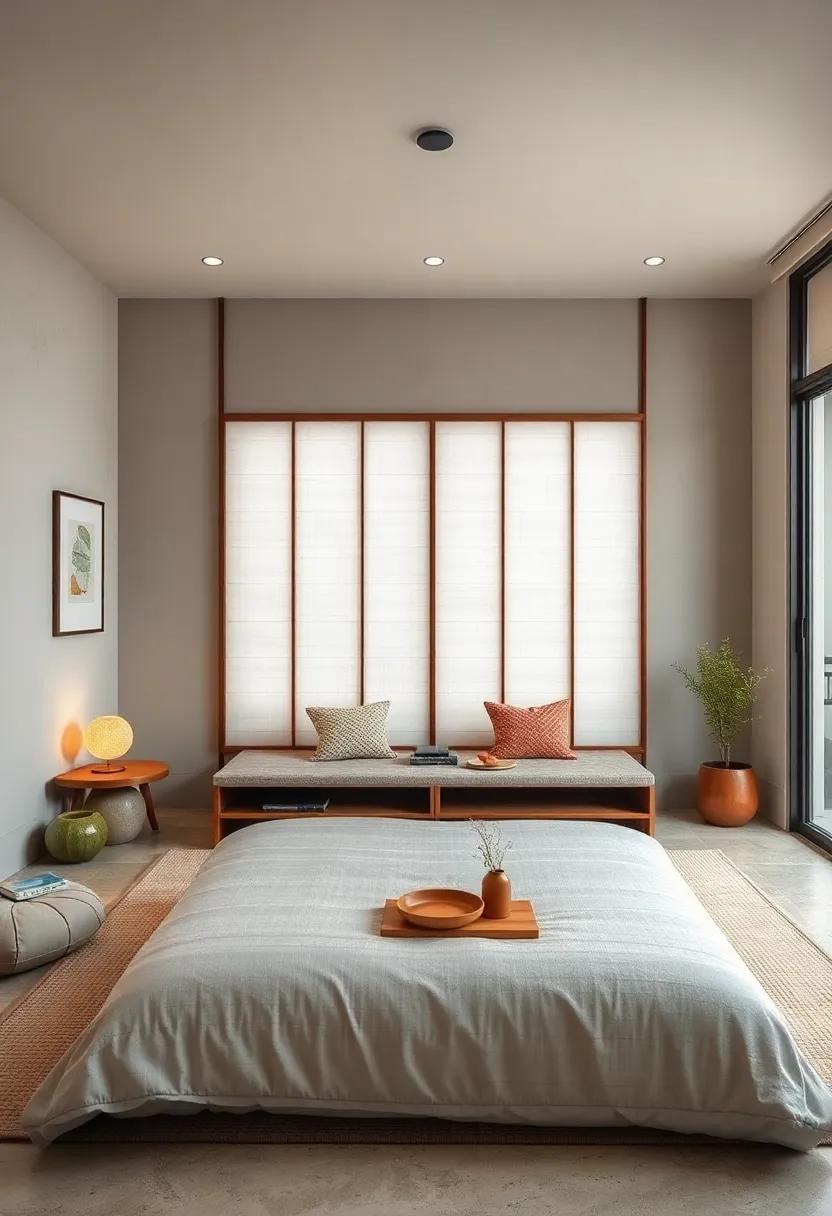
Create a serene corner in your Japanese bedroom by setting up a dedicated altar space that reflects your personal beliefs and aesthetic. The altar can be as simple or elaborate as you wish,adorned with meaningful elements that enhance tranquility. Consider including:
- Candles: Soft flickering light creates a calming atmosphere.
- Crystals: Choose stones that resonate with peace and healing, like amethyst or rose quartz.
- Fresh Flowers: Natural blooms bring vibrancy and a connection to nature.
- Personal Mementos: Incorporate photographs, letters, or small tokens that evoke cherished memories.
- Spiritual Texts: Place a favorite book or journal for introspection and gratitude.
Consider using bamboo or natural wood elements to complement the aesthetic of your shoji panels and maintain a harmonious flow throughout the room. Arranging your items mindfully helps to cultivate a sense of peace and invites mindfulness into your daily routine. For a more organized approach, a small table can serve as the base for your altar. Incorporate:
| Element | Significance |
|---|---|
| Candle Holder | Symbolizes light and guidance. |
| Incense Holder | Enhances meditation with calming scents. |
| figurine | Represents a spiritual or cultural belief. |
| Small Buddha Statue | Embodying peace and enlightenment. |
Employ symmetry and Balance: Arrange furniture and decor in a symmetrical way to create visual harmony in the room
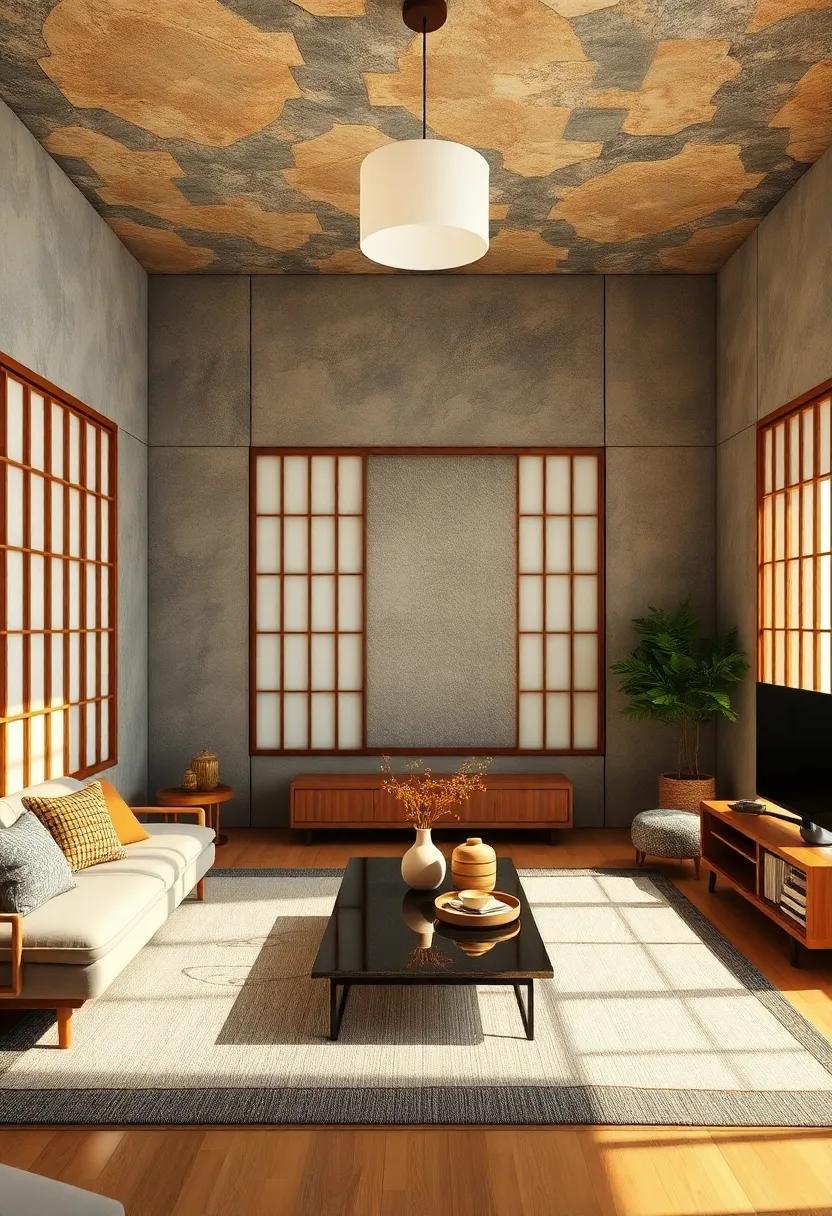
Creating a soothing atmosphere in a Japanese bedroom is greatly enhanced by the principles of symmetry and balance. To achieve visual harmony, consider arranging furniture such as your bed, nightstands, and other decorative elements in a mirrored fashion. For instance, you might position two identical nightstands on either side of the bed, adorned with matching lamps that cast a soft glow. This setup fosters a sense of tranquility and order, drawing the eye naturally to the center of the room. The minimalist aesthetic associated with Japanese design thrives on simplicity, so keeping items uniform yet distinct can enhance the serene ambiance.
Along with furniture placement,think about the decor elements that complement this balance. Incorporate paired decorative items such as:
- Art pieces that depict similar themes or colors, flanking the walls.
- Plants placed in matching vases, symbolizing natural harmony.
- Textiles, like throw pillows or blankets in coordinating patterns and colors, positioned symmetrically on seating.
This thoughtful arrangement encourages both physical and visual flow in the bedroom,allowing for a peaceful retreat that embodies the essence of Japanese minimalism. Moreover, consider the use of a central focal point like a traditional Japanese tapestry or a serene artwork above the bed, anchoring the room and creating a sense of balance.
Opt for Low-maintenance Decor: Choose decor that requires minimal upkeep, allowing for more time spent in relaxation
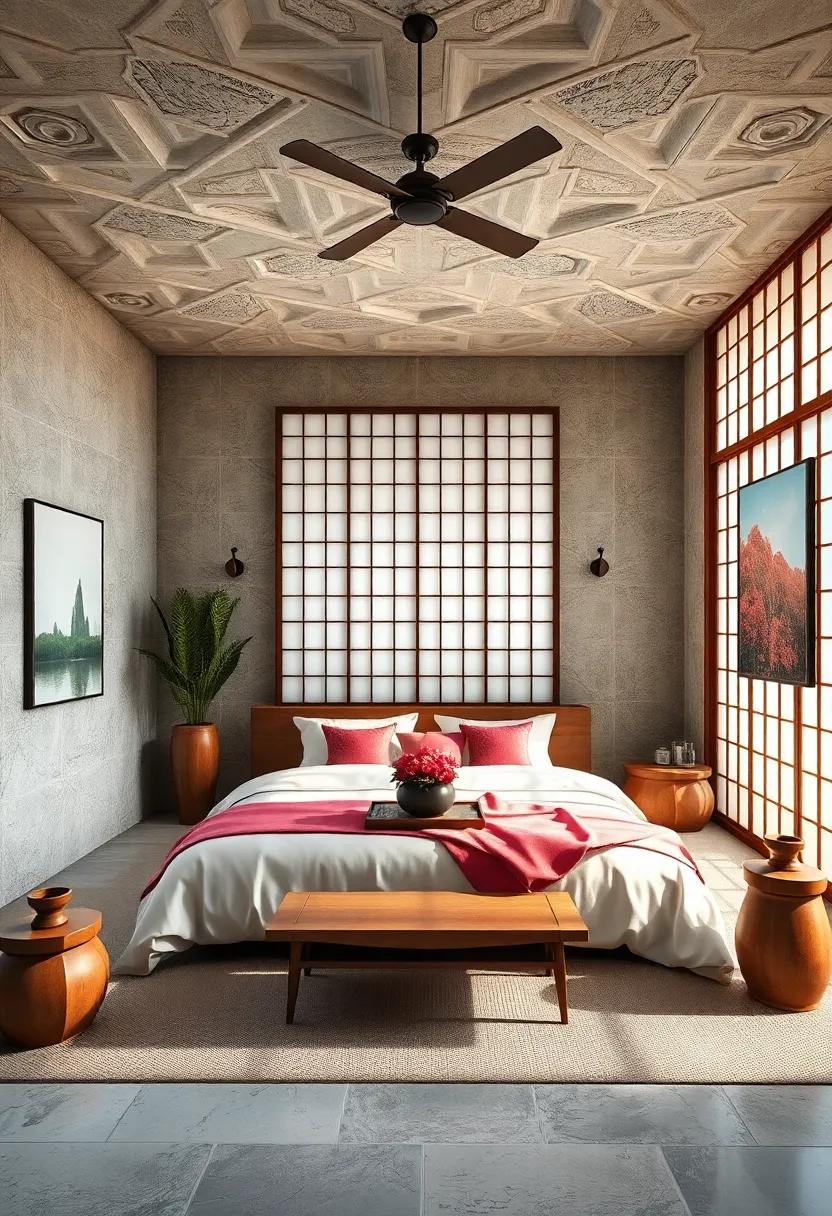
When designing your tranquil Japanese bedroom, focusing on low-maintenance decor allows you to create a serene space without the burden of constant upkeep. One effective approach is to select materials that naturally resist dirt and wear. As an example, bamboo flooring not only complements the aesthetic but is also easy to clean and maintain. Pair this with synthetic shoji screens made from durable materials that emulate the traditional look but require no special treatment, thus enhancing your space with minimal hassle.
Incorporating succulent plants or zodiac bonsai can add a touch of greenery without overwhelming your routine. These plants thrive on neglect, needing very little watering and upkeep. Consider using soft fabrics for your bedding,like cotton or linen,which are not only breathable but also require less frequent washing. Additionally, opting for minimalist artwork with simple lines and neutral colors helps maintain a clutter-free visual, ensuring that your decor aligns with both your lifestyle and the calming essence of the Japanese aesthetic.
Incorporate Natural Sound Elements: Use natural soundscapes like soft wind chimes or bamboo flutes to enrich the tranquility
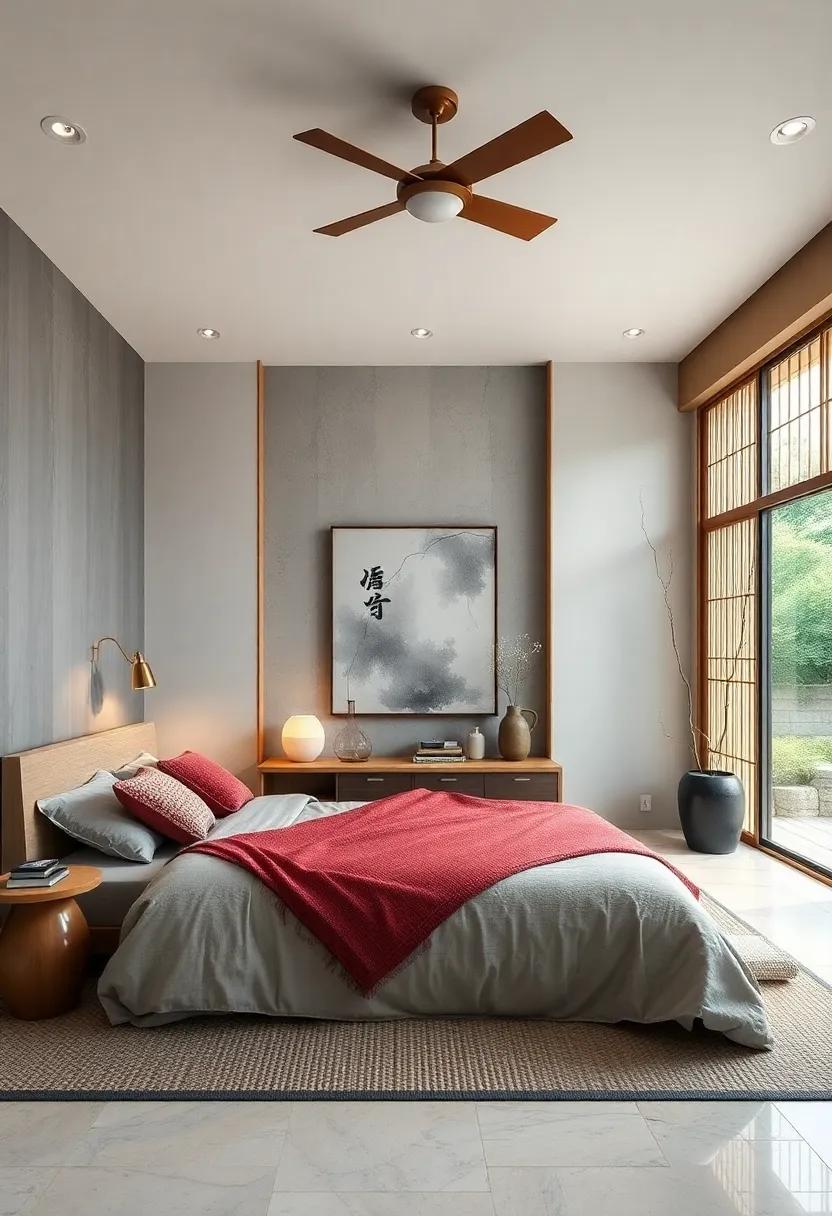
To create a serene atmosphere in your Japanese bedroom, consider incorporating gentle natural sound elements that resonate with the tranquility of the surroundings. Opt for soothing wind chimes, ideally crafted from materials like bamboo or ceramic. Their delicate tinkling can evoke feelings of peace every time a breeze flows through your open window. Additionally, bamboo flutes create rich, earthy tones that can fill the space with calming melodies, perfect for meditation or relaxation. These organic sounds serve not only as a backdrop for quiet reflection but also enhance the connection to nature that is so vital in a Japanese-inspired space.
Other options to explore include water features, such as small tabletop fountains, which provide the gentle murmur of trickling water, reminiscent of a serene garden stream. You might also want to add nature sounds playlists on a low volume; soft chirping birds or rustling leaves can harmonize beautifully with the physical ambiance of your bedroom. These natural soundscapes invite an inner stillness, making it easier to unwind at the end of the day. consider creating a dedicated playlist with a mix of these elements:
| Sound Element | Effect |
|---|---|
| wind Chimes | Creates a gentle, melodic atmosphere |
| Bamboo Flute | enhances meditation and relaxation |
| Fountains | Invokes a sense of calm and refreshment |
| Nature Sound Playlist | Fills the room with a tranquil natural ambiance |
Choose Multi-functional Furniture: Use pieces that serve dual purposes, keeping the space uncluttered and efficient

Incorporating furniture that performs multiple functions is an excellent strategy for achieving a serene and uncluttered atmosphere in your Japanese bedroom. By choosing items that can serve more than one purpose, you not only maximize space but also enhance the overall aesthetic. As an example, consider a storage ottoman that offers both seating and hidden compartments for blankets or books. Additionally, a daybed can double as a cozy resting place during the day while providing a comfortable sleeping arrangement at night. This duality keeps the space versatile and organized.
Another ingenious option is a foldable desk that can transform into a small dining table or an art workspace when needed. This flexibility is essential in maintaining tranquility, as it allows you to adapt the room to your current needs without overwhelming it with excess furniture. Think about nesting tables as well; they can neatly be tucked away when not in use yet provide ample surface area for snacks, plants, or decorative items when brought out. By selecting such thoughtfully designed pieces, you create a harmonious environment that promotes relaxation and mindfulness.
Focus on Scent with Incense: Introduce calming incense to evoke a sense of peace and meditate on the aromas
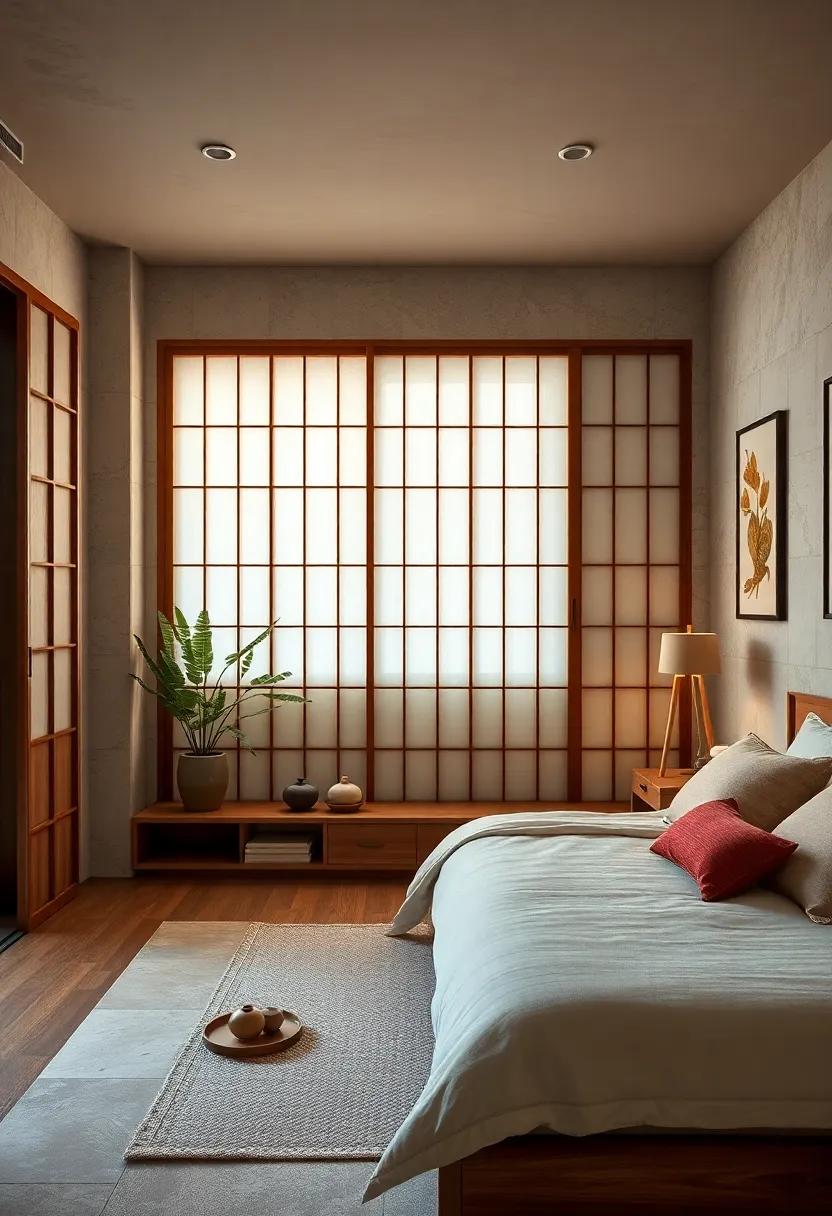
Infusing your serene space with the warm, earthy aromas of incense can transport you to a tranquil state, enhancing your meditation and relaxation experience. Choose incense that embodies the serene spirit of a Japanese garden, such as sandalwood, lavender, or green tea. These scents not only provide a soothing atmosphere but also help to clear your mind and deepen your focus. Incorporate these calming aromas into your daily routine by lighting them as you unwind, read, or practice mindfulness, allowing the delicate fragrance to fill your Japanese-inspired haven.
To create a harmonious ambiance, consider using an elegant incense holder to complement your bedroom’s aesthetic. Opt for ceramic or wooden designs that reflect traditional Japanese craftsmanship. Here’s a quick reference table to inspire your incense selection:
| Incense Type | aroma Profile | Benefits |
|---|---|---|
| Sandalwood | Warm, creamy | Promotes relaxation |
| Lavender | Floral, calming | Reduces anxiety |
| Green Tea | Fresh, earthy | Enhances focus |
As you meditate, allow each inhale to envelop you in the soothing embrace of the chosen scent. Focus on the transformative power of aromas; whether it’s the crisp breeze wafting through a bamboo grove or the subtle warmth of a sunlit afternoon. By prioritizing scent in your tranquil retreat, you create the perfect backdrop for peaceful contemplation and mindfulness.
Create a Viewpoint: Position a chair near a window with a view of nature to cultivate a peaceful perspective
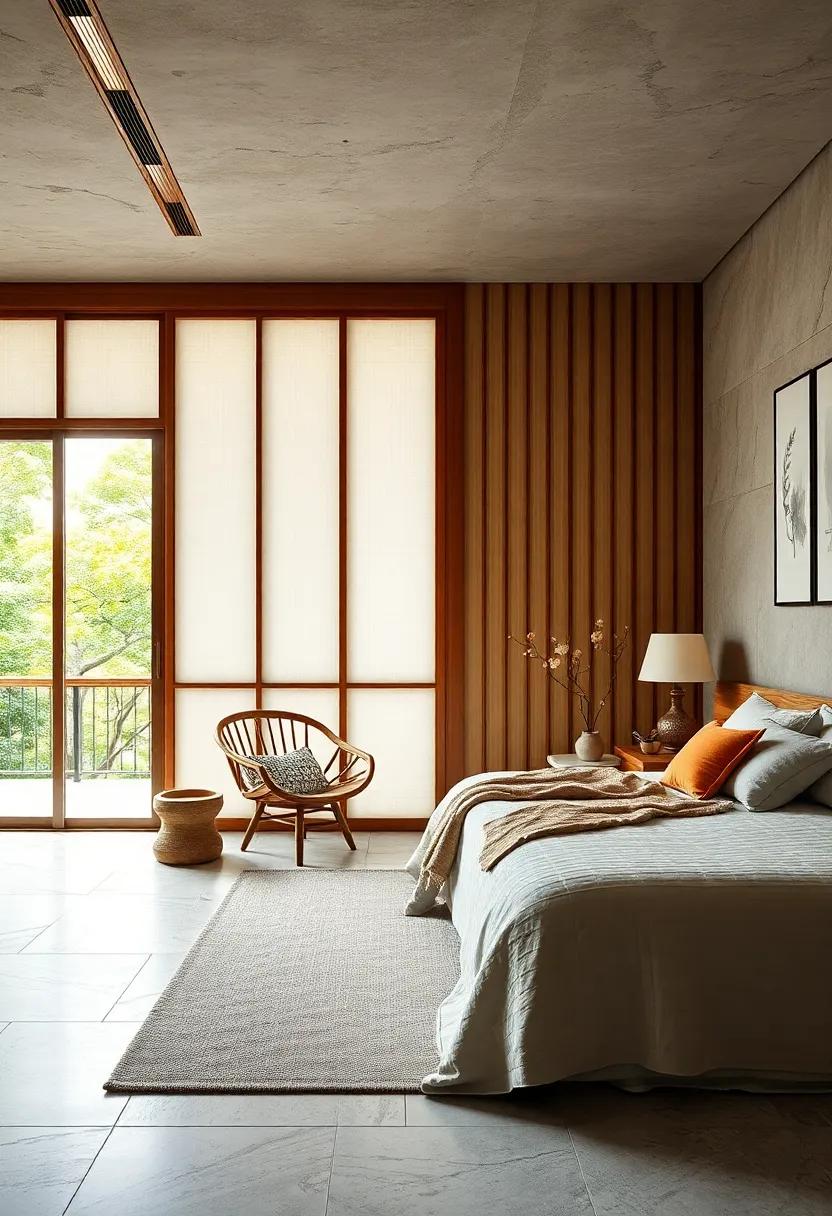
To foster a serene atmosphere in your Japanese bedroom, positioning a chair near a window with a view of nature is an essential step. This simple yet effective arrangement encourages moments of quiet reflection and mindfulness.the natural light streaming in, complemented by the scenery outside, creates an inviting nook for reading or meditation. Consider adding a few plants near the chair to enhance the connection to the outside world, making your corner feel even more harmonious and alive.
When selecting a chair, opt for one that embodies minimalist design, preferably in natural materials such as bamboo or light wood. This aligns with the principles of Japanese aesthetics, which emphasize simplicity and the beauty of nature. as you sit back in your chair, let your gaze wander out to the foliage, flowers, or distant hills, allowing the view to inspire feelings of tranquility and grounding. You may also want to create a small side table to hold your tea or a journal,further encouraging peaceful moments in your curated sanctuary.
End with a personal Touch: Incorporate mementos or items that hold personal significance, making the space uniquely yours

Transforming your space into a personal sanctuary is all about the details. Consider showcasing a collection of family heirlooms, such as a beautifully crafted tea set or a handwoven tapestry. These items not only tell a story but also instill a sense of warmth in your bedroom. You may also choose to include photographs that capture precious memories, framed in minimalist styles that harmonize with the overall aesthetic of your room. Place them strategically on shelves or nightstands, allowing each piece to incite feelings of nostalgia and peace.
Another way to infuse your bedroom with personal significance is by incorporating artifacts from travels or experiences that have shaped you. Items like a worn-out travel journal, exotic stones collected from remote beaches, or ceramic pots made during a pottery workshop can serve as focal points, igniting conversations without overwhelming the serene atmosphere. create a designated display area, perhaps a small table or a simple shelf, to invite these elements into your daily life. As you curate this medley of treasured items, remember to keep your selections minimal, allowing the space to breathe while showcasing the essence of who you are.
The Way Forward
As we draw the curtains on our exploration of tranquil Japanese bedroom designs featuring shoji panels,we hope that these 25 inspiring elements have sparked your creativity and nurtured your desire for serenity. Each detail you incorporate can transform your space into a sanctuary of peace and reflection, where every corner invites calmness and connection to nature.
Remember, a tranquil bedroom is not merely about aesthetics; it’s about fostering a restful environment that resonates with your personal journey and well-being. Whether you’re incorporating natural materials,harmonious colors,or the gentle diffused light of shoji screens,use this guide as a stepping stone toward creating your personal retreat.
As you embark on this journey, embrace the art of simplicity and intentional design. May your bedroom become a nightly escape where you can recharge your spirit and celebrate the beauty of stillness. Now, go forth and design a space that reflects the tranquility within!
As an Amazon Associate I earn from qualifying purchases.

